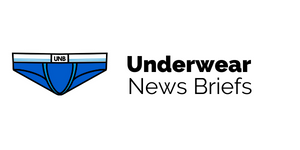Hello, and welcome back to “UNB Fitness Corner”. Darrin Miller here – striking a pose in one of my favorite underwear lines and styles – a classic thin banned thong by Papi.
Last week we focused on the first attribute required in setting successful fitness goals. This week, we focus on expanding upon the next two attributes:
Goals Must Be Well Defined
OK, so you have decided you want to loose some weight or increase the size of your chest or run farther, and you have even decided to write this down-good. But let’s think about it. These goals sure are nebulous and vague-“some weight”, “bigger”, “farther”. Furthermore, when are these goals to be accomplished? You have not set any kind of a deadline. When you are developing your goals you need to be as specific as possible. Anything that can be quantified, should be quantified and goals should always have a target completion date. So now your revised goals could be something like:
- “I want to loose 30 pounds by 15-Sep-2011” or
- “I want to increase the size of my chest by 2 inches by 17-Aug-2011” or
- “I want to be able to run 5 miles by 20-Dec-2011”
These revised goals are vast improvements over the former ones, but here is that potential for memory lapse again. You stated how much weight you would like to loose or gain, in quantifiable terms-great. However, what if half way into your “weight reduction program” you forget what you weighed on the first day? Was it 152 pounds or 158 pounds? For safety, it is advisable to develop goals with “anchor points” as well as “change factors.” With this in mind your goals could now be stated as:
- “I want to loose 30 pounds by 15-Sep-2011 bringing my weight down to 150 pounds from 180 pounds” or
- “I want to increase my chest measurement by 2 inches, from 38 inches to 40 inches, by 17-Aug-2011” or
- “I want to be able to run 5 miles by 20-Dec-2011 increasing my running abilities by 3 miles”
Goals Must Be Measurable
In order for goals to be achieved you have to work toward achieving them. Sounds simple enough. But how will you know when you are moving closer to achieving your goals? Answer, by conducting periodic measurements of your progress. Again, for anyone in the “work world” this is nothing new. Monthly sales reports, performance statistics, and employee appraisals are just some of the ways companies determine if they are moving closer to achieving their goals. And remember, changing your approach to achieving a goal is not a bad thing, so long as reaching that goal remains the focus of your actions. Franklin D. Roosevelt said it best when he said “It is common sense to take a method and try it. If it fails, admit it frankly and try another. But above all, try something.” If you were not able to periodically count how many eggplants had grown chances are you would not have met your goal because you would not have known that you needed to alter your approach (i.e. goals must be measurable to be achieved).
So, how do your goals stack up to this constraint? Well, you can certainly hop on the scale or run a tape measure across your chest or count the miles you have run through out the course of your goal timeline and make adjustments to your exercise program in accordance with your findings, so measurability is not an issue.



